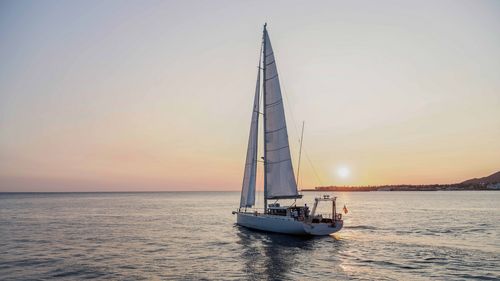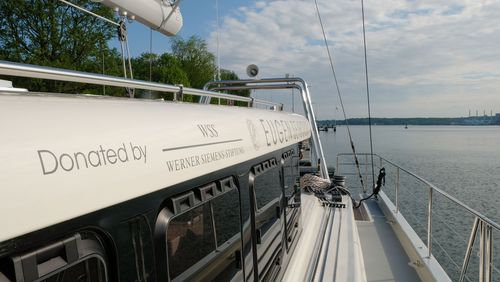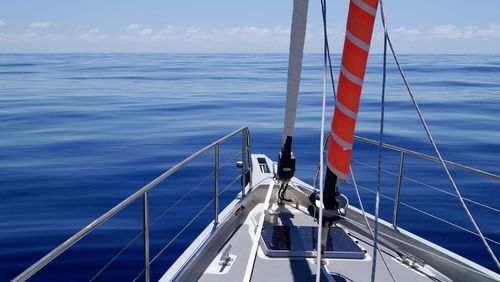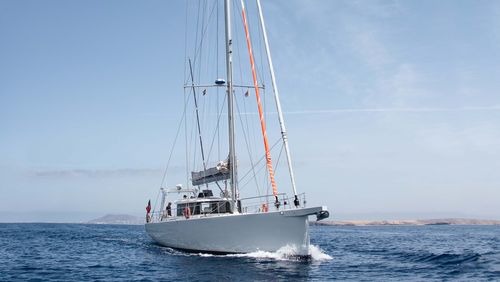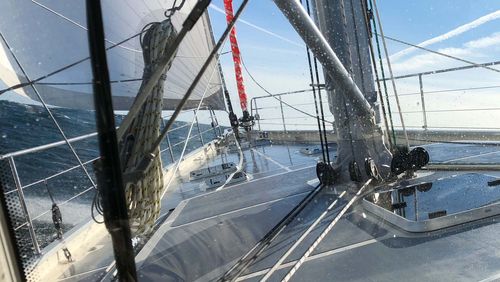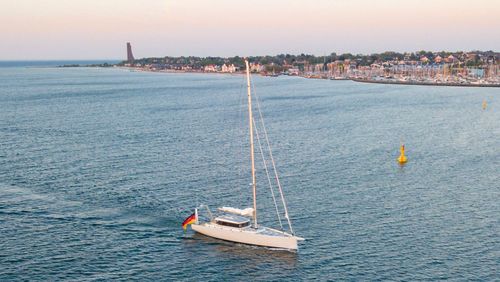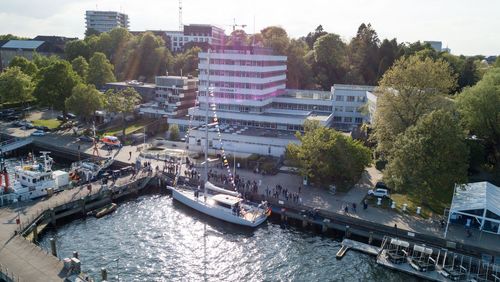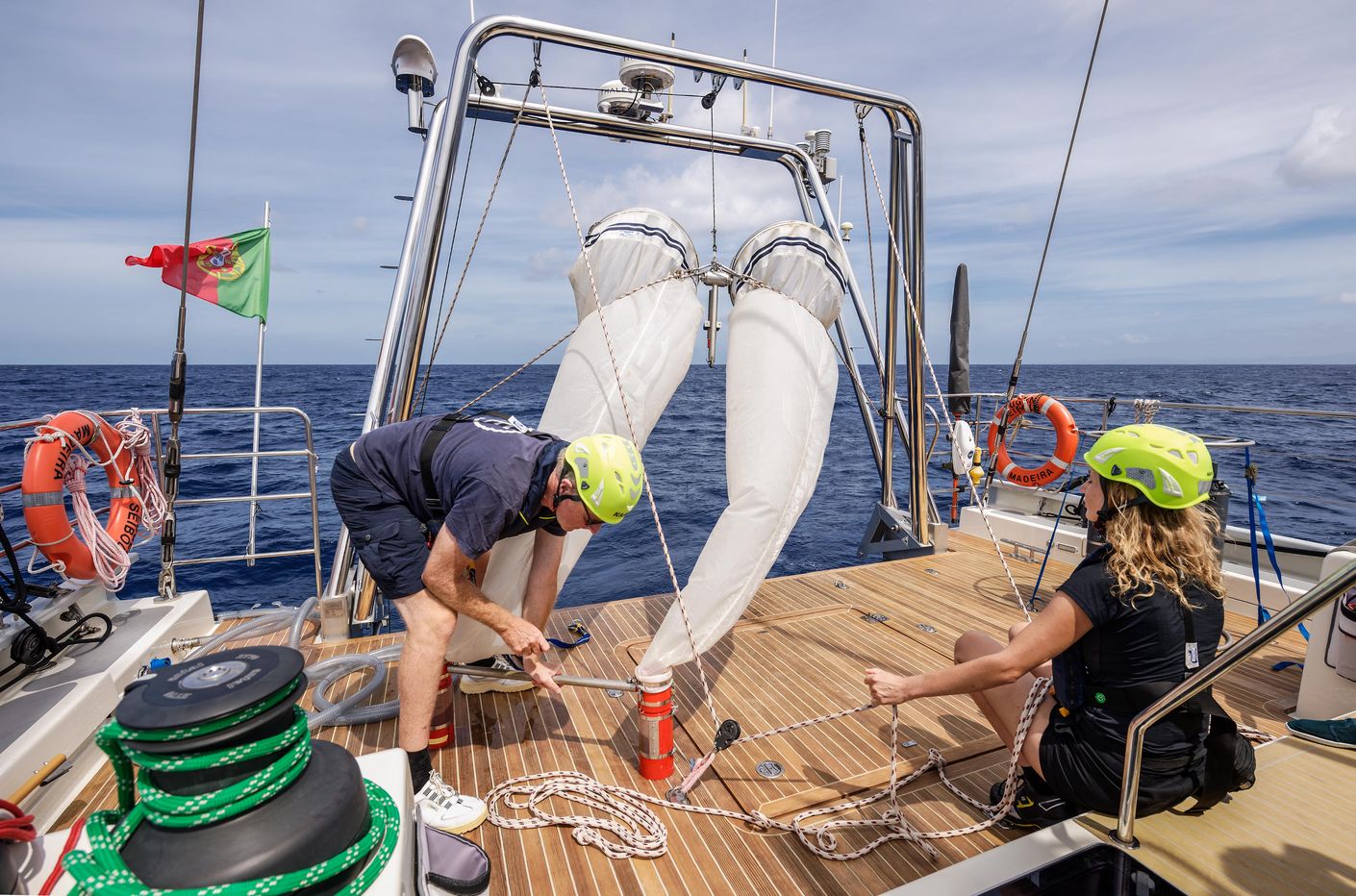
Climate data from a yacht
After three intense years spent collecting samples on the high seas, the team led by Gerald Haug from the Max Planck Institute for Chemistry in Mainz can now present the initial findings from their work on the research vessel Eugen Seibold. The data lay the groundwork for reliable forecasts on how global warming will impact the oceans.
From 2019 to 2021, the researchers on board the Eugen Seibold traversed the Atlantic Ocean, collecting samples and covering more than 20 000 kilometres along the way. Between Iceland and the equator, the crew analysed the seawater at depths of up to one thousand metres in the interest of gleaning precise details about the ocean-atmosphere exchange. Using their high-tech instruments, the crew measured a total of fifty biological, chemical and physical parameters and their interactions; their main focus was the greenhouse gas carbon dioxide. Now, terabytes of data and thousands of samples are available for a wide range of analyses.
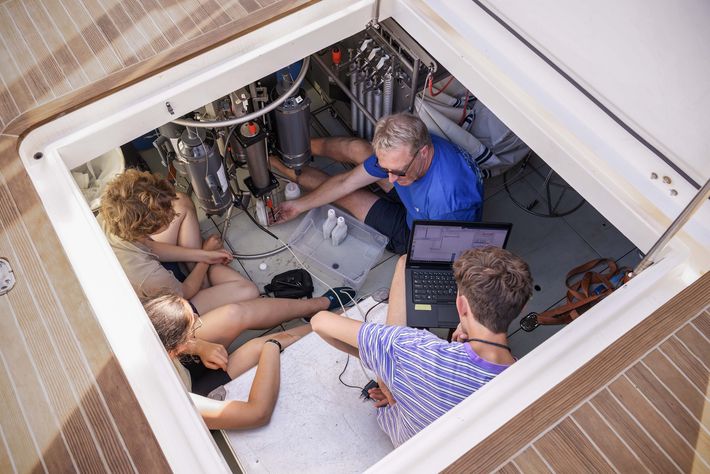
Daily carbon dioxide exchange
The initial findings at the Max Planck Institute for Chemistry confirm the general assumption that three factors play a decisive role in the ocean’s uptake of carbon dioxide: turbulence in the water masses, chemical absorption capacity and the conversion of CO2 into oxygen by plants (photosynthesis). These processes also depend heavily on water temperature. Now, thanks to the detailed data and samples collected by the Seibold crew, it’s possible to chart the CO2 exchange in specific ocean regions over the course of a day.
Take, for instance, the nutrientpoor waters of the subtropical Atlantic Ocean east of the Azores. At sunrise, photosynthesis in plants (such as algae) increases, whereby carbon dioxide is absorbed and the concentration of oxygen at the water’s surface rises. Algae that form in the morning are then eaten by zooplankton, whose respiration drives up CO2 concentration in the water. By noon, solar radiation is so strong that the algae convert less carbon dioxide into oxygen, and after midday, the evaporation of seawater causes clouds to form, reducing the amount of solar radiation, whereupon photosynthesis—and consequently oxygen production—again increases. At sunset, oxygen production drops, the CO2 concentration in the seawater remains high, and zooplankton graze on algae. With minor differences, this cycle was also observed in other marine provinces.
Complex ocean
“We now see that CO2 uptake in the ocean-atmosphere exchange is much more complex than previously assumed,” says Ralf Schiebel, head of research on the Eugen Seibold. “And this knowledge about the overall system, including the many physical, chemical and biological parameters that interact and influence each other, is essential for making forecasts on climate change.” The data collected by the Seibold crew can now be used to improve current climate models, making it possible to formulate realistic future scenarios. As such, forecasts for how global warming will impact the oceans are placed on solid scientific footing. Project leader Gerald Haug calls it “a major breakthrough”. When conducting the next analyses, the team will intensify their collaboration with the German Marine Research Alliance, and specialised IT firms will also be consulted. “It would be impossible for us to manage the data on our own,” Schiebel says. “We need a large network.”
Understanding El Niño
In December 2022, the Eugen Seibold will embark on its first voyage to the Pacific. The crew will set up base in Panama City; over the next three years, this will be the point of departure for their various research missions. “We now also have a better chance to observe an El Niño phase,” says Schiebel. The natural extreme weather phenomenon is interesting for the researchers, as it radically changes the normal conditions in the Pacific and impacts the entire global climate.
![[Translate to English:] Wenn Passatwinde im Golf von Panama das warme Küstenwasser aufs Meer hinausschieben, strömt aus 300 bis 400 Metern Tiefe kühles, nährstoffreiches Wasser nach.](/fileadmin/_processed_/b/a/csm_01-WSS-News-Seibold-upwelling_a08a676efb.png)


